Uneven indentations and pitted scars on the skin are often the result of deep skin damage, making it difficult to restore a smooth surface. Can pitted scars be treated? What causes them, and how to treat pitted scars effectively? In this article, HBIO Clinic explores the causes of pitted scars and various solutions that help you achieve smoother, more even-toned skin.
What are pitted scars?
Pitted scars are small depressions or pits on the skin’s surface that often appear when the collagen in the skin is damaged after an inflammatory acne, pimple, or other injury heals imperfectly. When the skin is damaged, the body tries to produce collagen to regenerate the skin, but sometimes this process doesn’t work properly, resulting in the formation of uneven, depressed scars.
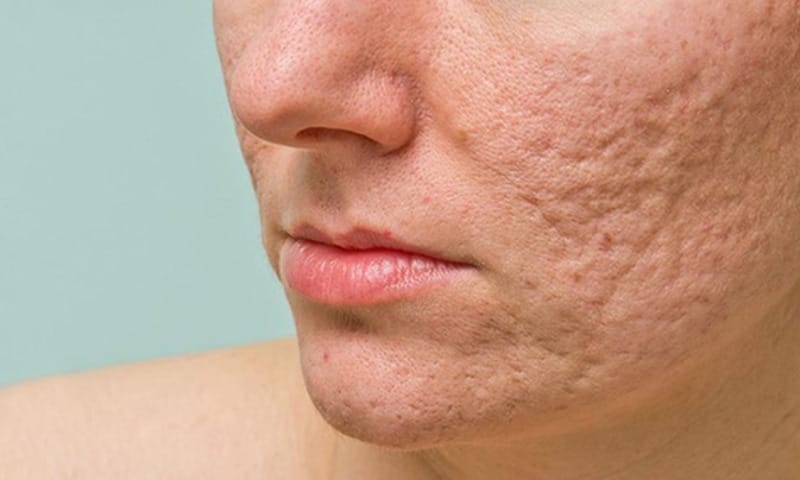
Common types of pitted scars
To ensure effective treatment for pitted scars, dermatologists classify them based on shape to determine the right approach. Below are the most common types:
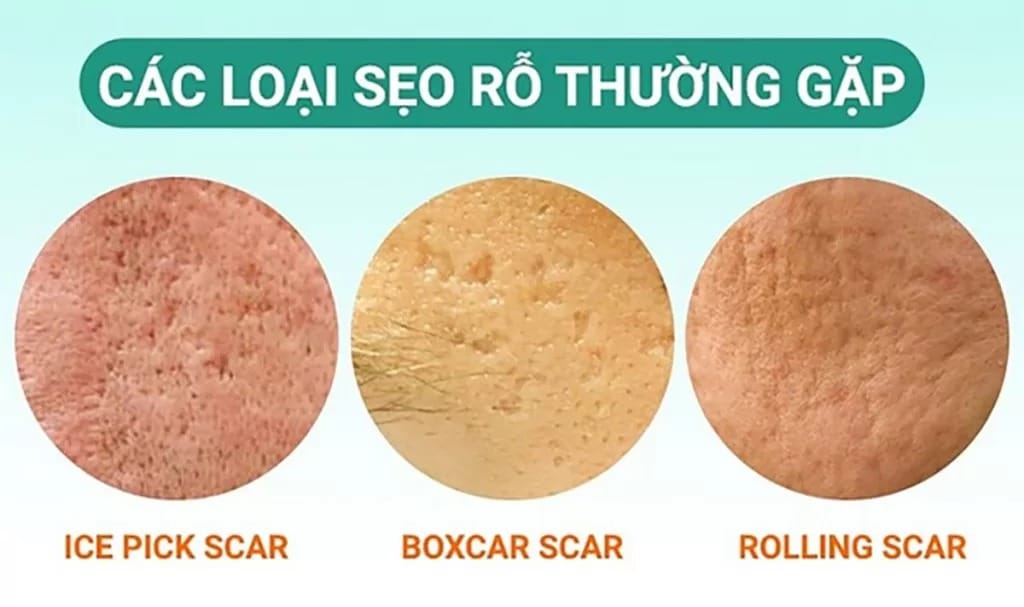
Ice-pick scars
-
Characteristics: Small but deep, resembling punctures made by sharp objects.
-
Structure: Depth greater than 0.5mm, narrow opening, bottom of scar not visible.
-
Cause: Typically results from untreated acne and loss of collagen in the dermis.
This is the most difficult type to treat and is often mistaken for enlarged pores.
Boxcar scars
-
Characteristics: Broad, sharply defined edges with clearly visible base.
-
Size: Ranges from 1.5–4mm in width; round, oval, or triangular.
-
Cause: Often caused by severe inflammatory acne or improper acne extraction. Also seen in post-chickenpox skin.
-
Note: One of the most noticeable pitted scars, significantly affecting aesthetics.
Rolling scars
-
Characteristics: Shallow, wide scars with uneven surface and no sharp edges.
-
Structure: Subdermal fibrous bands pull the skin inward, causing a wave-like appearance.
-
Cause: Formed by fibrotic tissue that pulls the skin downward.
-
Appearance: Often found on thick skin such as the lower cheeks or chin, contributing to an aged and sagging look.
Mixed pitted scars
-
Characteristics: A combination of all types above—ice-pick, boxcar, and rolling.
-
Cause: Acne lesions heal inconsistently, leading to mixed scar shapes depending on inflammation severity and skin type.
-
Note: Difficult to treat without proper techniques due to the complexity of the skin surface.
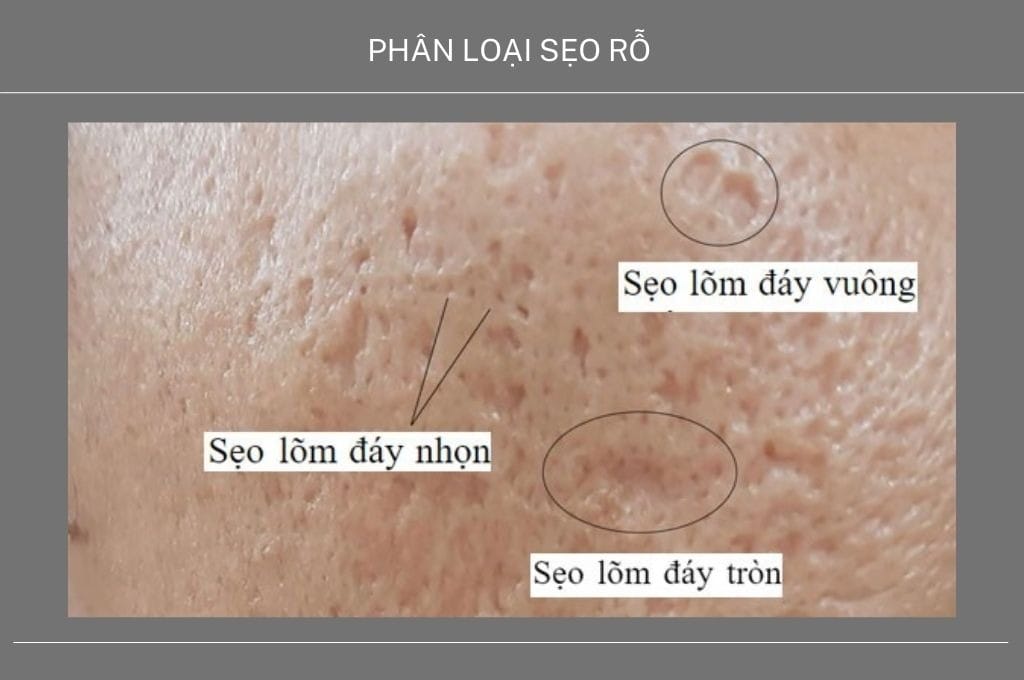
Read now: Safe and Effective Acne Vulgaris Treatment at HBIO Clinic
What causes pitted scars?
Pitted scars form when the skin is damaged and doesn’t regenerate evenly, leading to irregular skin texture. Common causes include:
-
Acne: The most frequent cause. Untreated or improperly handled inflammatory acne can damage collagen structures.
-
Improper acne extraction: Using non-sterile tools or squeezing pimples can spread bacteria and worsen inflammation, causing scars.
-
Deep skin trauma: Burns, injuries, or wounds that don’t heal well often result in permanent pitted scarring.
-
Skin conditions: Diseases like chickenpox, dermatitis, or psoriasis can deeply damage skin layers, leading to pitted scars.
-
Genetics: Individuals with poor collagen production or scar-prone skin are more likely to develop pitted scars.
-
Skin aging: As collagen declines with age, the skin becomes thinner and more prone to uneven healing.
-
Chronic inflammation: Long-lasting skin inflammation can damage tissue and form sunken scars.

Cure for pitted scars: 4 effective methods
Can pitted scars be treated? Yes—with the right method and consistency. Here are four common options:

Natural remedies
Ingredients like centella asiatica, aloe vera, turmeric, or green tea powder contain antioxidants and vitamins that promote collagen regeneration. These are best for mild acne scars, requiring long-term commitment.
Chemical Peels
A treatment for acne scars using chemical solutions to remove dead skin cells and promote smoother, even-toned skin. Types include:
-
Superficial peel: Removes only the outermost layer to brighten and reduce spots.
-
Medium peel: Reaches the dermis, improving moderate scars and texture.
-
Deep peel: Penetrates deeper layers to restructure skin and treat severe pitted scars.
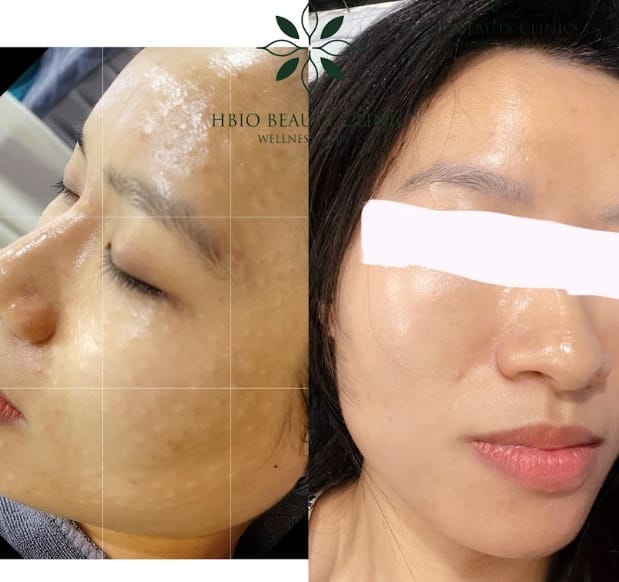
Creating pseudo-injuries (Needling, Micro-needling)

Filler Injections
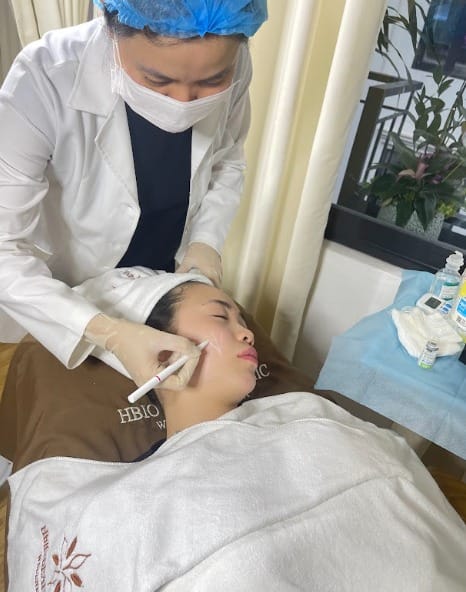
Read now: How long does it take for acne scars to fade? Signs, causes, and treatment methods.
- Improve skin structure: Filler fills in scars, making the skin even and smooth
- Increase collagen production: Filler stimulates the body to produce collagen, making the skin firmer.
- No surgery required: This is a non-invasive method, less painful and has a quick recovery time.
- Fast results: After injection, you will see immediate results, pitted scars are filled and clearly faded.


 Tiếng Việt
Tiếng Việt
Dr. Thai Nguyen – Founder and Medical Director of HBIO Clinic. As an expert in aesthetic dermatology, she regularly shares in-depth knowledge and practical experience to provide valuable and insightful information for those seeking better skin health.